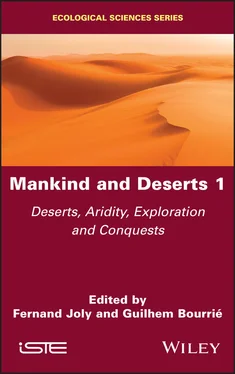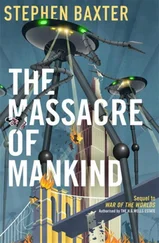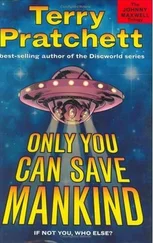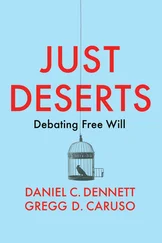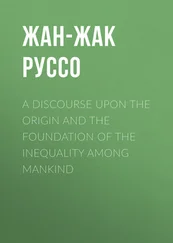Mankind and Deserts 1
Здесь есть возможность читать онлайн «Mankind and Deserts 1» — ознакомительный отрывок электронной книги совершенно бесплатно, а после прочтения отрывка купить полную версию. В некоторых случаях можно слушать аудио, скачать через торрент в формате fb2 и присутствует краткое содержание. Жанр: unrecognised, на английском языке. Описание произведения, (предисловие) а так же отзывы посетителей доступны на портале библиотеки ЛибКат.
- Название:Mankind and Deserts 1
- Автор:
- Жанр:
- Год:неизвестен
- ISBN:нет данных
- Рейтинг книги:4 / 5. Голосов: 1
-
Избранное:Добавить в избранное
- Отзывы:
-
Ваша оценка:
- 80
- 1
- 2
- 3
- 4
- 5
Mankind and Deserts 1: краткое содержание, описание и аннотация
Предлагаем к чтению аннотацию, описание, краткое содержание или предисловие (зависит от того, что написал сам автор книги «Mankind and Deserts 1»). Если вы не нашли необходимую информацию о книге — напишите в комментариях, мы постараемся отыскать её.
Mankind and Deserts 1 — читать онлайн ознакомительный отрывок
Ниже представлен текст книги, разбитый по страницам. Система сохранения места последней прочитанной страницы, позволяет с удобством читать онлайн бесплатно книгу «Mankind and Deserts 1», без необходимости каждый раз заново искать на чём Вы остановились. Поставьте закладку, и сможете в любой момент перейти на страницу, на которой закончили чтение.
Интервал:
Закладка:
The final chapter in Volume 3, “ Living in the desert”, was taken up by Marc Côte, Professor Emeritus at the University of Provence, who worked as a professor for 20 years at the University of Constantine. He has drawn on his deep knowledge of the land and the people of the Saharan region to present what he calls “The Desert Civilization”.
Finally, it must be noted, with great regret, that, since 2010, “geopolitical turbulences have tended to change the fundamentals, to burn away knowledge and to prevent researchers from keeping in touch with this part of space and humanity.”
Acknowledgments
Most of the illustrations were refined by Éliane Leterrier.
Yvette DEWOLF
Honorary Professor at the University Paris VII, Denis Diderot
Paris
August 2020
1 1Professor at the University Paris VII, Denis Diderot, who spent 15 years at the Moroccan Institute of Science in Rabat.
1
Introduction: The Concept of a Desert
“You cannot get the desert into a book any more than a fisherman can haul up the sea with his nets.”
E. Abbey
1.1. All about a word
Desert is one of those familiar yet ambiguous words whose meaning changes depending on people, time and place. It is one of those words whose various meanings can change the very image one has of reality. The personality of the desert is as difficult to capture in everyday language as in the imagination or in scientific research.
The object and the idea, as well as the words to talk about them, exist in humanity’s oldest texts: Babylonian, Egyptian, Hebrew, Chinese etc. In Latinate languages, the word can be traced back to 11th Century Latin. The word first described the result ( desertus : deserted, abandoned) of an act of separation ( deserere : to desert, to leave). A little later, the word was used to denote a place ( desertum : desert), an empty or emptied site, uninhabited or depopulated. The various forms this word has taken over the years reflect this ambiguity.
In Medieval times, hermits would retire to the desert . The term, in this context, denoted both the isolation from other people as well as the barrenness of the place, the solitude and mysticism of the situation. In the 17th Century, “deserts” chiefly evoked the idea of chosen spots that were distant and discreet, where one could “flee into a desert from the approach of humans”. It was a place that was cut off from the world, voluntarily so, as was the case at the Port-Royal-des-Champs convent 1 , or as a result of circumstances, as in the case of the Camisards, French Protestants who lived in an isolated region of France. This connotation of abandonment or exile persists to this day. For example, we say about someone whose words go unheeded that “he is the voice crying in the wilderness” (Isaiah 40:3) and Charles de Gaulle was abandoned politically between 1946 and 1958 in a period that came to be called his “crossing through the desert.” 2 From the 18th Century onwards, however, it is the geographic sense of the word that prevails. A desert is a seemingly lifeless region, uninhabited, uncultivated, arid (from the Latin arere , to burn, to dry) and sterile due to its dryness. The 19th and 20th Centuries, in turn, saw the rise of new forms of deserts: economic and demographic deserts due to rural flight toward industrial and urban areas. Finally, “desert” is used in a psychological sense to talk about an internal state resulting from a sense of deprivation of the heart or mind.
1.2. Arriving at a definition
1.2.1. What is a desert?
Different people will have different answers to this question based on their experience and imagination.
When Fénelon 3 exclaimed, “But look! The most beautiful desert you could ever see. Do you not marvel at these streams that fall from the mountains, these steep rocks?”, he was, clearly, singing the praises of one of those wild retreats of which his contemporaries would often dream. Modern-day travel agencies celebrate a more truthful picture of a desert – bare landscapes, a sea of sand and five-star bivouacs. The Paris–Dakar Rally racers, whose tracks despoil the Saharan landscape with impunity, bring to television audiences the idea of a threatening desert: devious, enchanting and sometimes deadly! A place demanding courage and renunciation.
Indeed, the Sahara, so close to Europe and featuring in desert tales so often, is what Europeans use as the model for their concept of a desert : a vast mineral landscape, no water, no trees, sand, pebbles, nomads and camels. Majestic dunes, picturesque oases, treacherous mirages, outright fabrications and howlers – all these feature in most accounts of deserts, such as Théodore Monod’s Méharées . However, the North American conception of deserts is very different: there is the desolate Death Valley, the high plains in Arizona and Utah with their monoliths, arches, their dry rios , their candelabra cacti, their prairies, the Native Americans and their horses. In Central Asia, the deserts include the steppes, in southern Africa you have the dull sands of the Kalahari dotted with trees, and the vast white lakes, the inconstant giant rivers, the interminable shifting of the red dunes of Australia with eucalyptus, aboriginal settlements, sheep and cattle rearers, remote farms, the rabbit-proof fences, the kangaroos and their dry bush that can turn into green pastures in a rainy year.
The desert is all this and more. There are populated deserts, as in Mesopotamia and Egypt, or barren, lifeless deserts such as the Tanezrouft and Lut. There are dry deserts, such as the Libyan desert, and foggy deserts such as the Namib or Atacama deserts. And to these we must also add the frozen deserts found in high mountains and the polar regions. In fact, by this definition, the Antarctic is the largest desert in the world.
A desert is, above all, a vast region that is empty, dry and outside time. T. Monod described it as “the kingdom of absence”. It is a land of surprises, contrasts and oppositions that can occur far apart or close together, sometimes spread out over years, at others separated by barely a few hours. There is the Asian desert, where you broil in summer and freeze in winter, and there is the African desert, where all the days are torrid and all the nights are cold. There is the arid desert, containing opulent oases, while you have a desert enclosed within vegetation. There are deserts that are endlessly flat, as far as the eye can see, and there are plains with rocky islands or bleak mountains. There is the sudden downpour that breaks the monotony of waterless days, and the dry river that swells into a flood. You have the bare desert that transforms, with the rain, into a carpet of flowers. And there is the seemingly uninhabited desert – where as soon as you stop, someone pops up out of nowhere to look at you and to converse.
A desert is also a bare spot that is ideal for contemplation and spirituality, where Man finds himself alone in the face of this immensity, silence and beauty. It is the void, where all fundamental questions arise. It is the Biblical antithesis to the Promised Land. It is the site of fervor, where altars are built and sacrifices made, such as the sacrifice of Abraham; the sacred land where divinity approaches humanity, the land of Moses, Jesus, Mohammed and the Buddha. It is the chosen site for renunciation and retreat, from the medieval monks to the 19th Century Father Charles de Foucauld. It is the site of exaltation, the site of gigantic temples, as can be seen in Babylon, Egypt, Syria, Tibet and in the Andes. It was also the backdrop for adventurers and empire-builders, from Alexander the Great to Genghis Khan, and from the Incans to the conquistadors of the Andes and Mexico. It has served as the arena of war from Libya to Iraq, and the testing ground for the atomic bombs. It is fertile ground for prospectors and operators, the salt-miners of the Sahel and the gold-hunters in the Americas, as well as modern-day oil seekers. Finally, deserts have also served as an observatory for the curious, such as Ibn Battuta and Marco Polo, offered new horizons to explorers, such as Caillé and Barth in the Sahara, Prjevalski and Sven Hedin in Asia, Powell in the Colorado and Eyre in Australia, and been used as a research field for scholars, such as Stein in Chinese Turkestan or Monod in Mauritania.
Читать дальшеИнтервал:
Закладка:
Похожие книги на «Mankind and Deserts 1»
Представляем Вашему вниманию похожие книги на «Mankind and Deserts 1» списком для выбора. Мы отобрали схожую по названию и смыслу литературу в надежде предоставить читателям больше вариантов отыскать новые, интересные, ещё непрочитанные произведения.
Обсуждение, отзывы о книге «Mankind and Deserts 1» и просто собственные мнения читателей. Оставьте ваши комментарии, напишите, что Вы думаете о произведении, его смысле или главных героях. Укажите что конкретно понравилось, а что нет, и почему Вы так считаете.
